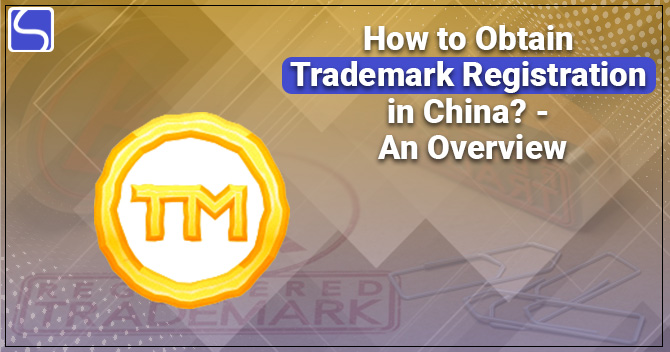Everything You Need to Know About Fluid Trademarks

Karan Singh | Updated: Dec 18, 2021 | Category: Trademark
Fluid Trademarks are alterations of the already registered Trademarks which coexist with them and are so made in an attempt to argue customer interest & strengthen brand loyalty. Such variations generally retain some characteristics of the actual Trademark while comprising new aspects. Hence, Fluid marks are marks that alter with time. The Fluid Trademarks may be created by changing design, name, words, colour, symbols, or any other element of the original mark.
The concept of Fluid Trademarks is an absolute U-turn from the idea behind traditional Trademarks, as the latter is based on the acceptance of steady & consistent marks to make the products or services of the owner differentiable, while the former achieve customer engagement by giving energetic, unique & striking alternatives to the actual mark.
Table of Contents
Are Fluid Trademarks Conventional or Non-Conventional Trademarks?
Fluid marks are different from Conventional trademarks because they repeatedly change, whereas later are inactive with which customers identify them easily. Judiciary has recognised protection to other variants of Trademark. However, neither any law recognises the Registration of all Fluid Trademarks in a single application, nor does any law recognises the improving of original Trademark into Fluid Marks to incorporate exceptional cases like Covid-19.
Unlike other Non-Conventional Trademarks, Fluid Marks don’t face any problem in Registration as Fluid Trademarks can be graphically presented. However, the brand doesn’t prioritise Fluid Marks Registration as it is only for the time being & Registration via a separate application would take time. Moreover, varying Fluid Marks might create confusion and discard the original mark. Hence, Fluid Marks get security through the action of passing off and are regarded as Non-Conventional Marks.
Is it Possible to register Fluid Trademarks as Series Trademarks?
Series Trademarks comprise a variety of Trademarks, concerning the similar products or services or their explanation, which similar to each other as to their unique characters and differ only as to matters of a non-uniqueness character not considerably affecting the Trademark’s identity. McPizza, McChicken, and McPizza are some examples of Series Trademarks of McDonald’s most popular food provider.
Hence, any changes in the non-distinctive elements of each mark must leave their visual & conceptual idea primarily unaltered. Such a series of Trademarks may be registered as a series in a single registration. Thus, the Series Trademark’s provision under Section 15 is applicable only if all the variants to be used for illustrating the Trademark can be predicted. So, even though, to an extent, this provision explains the concept of Fluid Trademarks, the robust nature of a Fluid Mark is an obstruction on the lane of Fluid Marks Registration.
Also, the proposed Section doesn’t permit updating the Trademark application into a series Trademark after the single Trademark Registration has taken place. Hence, it is clear that Section 15 doesn’t account for the dynamic and unanticipated nature of Fluid Trademarks & as an outcome, the present position of India concerning Series Trademark Registration doesn’t satisfactorily apply to Fluid Trademarks also.
Documents Required for the Registration of Fluid Trademark Registration
Any individual who claims to be the owner of a Trademark to be used by them apply for the Registration to the Registrar by providing the following documents:
- Identity proof of the applicant such as PAN Card, Aadhar Card, Passport, etc.;
- Address proof of the applicant or Trademark owner;
- Signed Form-48 (This form is used to provide an attorney with authorisation to file your Trademark application);
- If it’s a company or LLP, submit Incorporation Certificate;
- Logo if available & applicable;
- Submit Udyog Aadhar Registration Certificate;
- Form TM-A.
The documents can be served personally by post, by the host, electronically. All notices, statements, applications, or other documents except Trademarks, must be typewritten and printed in English or in Hindi in clear characters with deep permanent ink upon strong paper of A4 or lawful size on one side only and must have on the left-hand side thereof a margin of not less than 4 cms.
Process of Online Fluid Trademark Registration
It is already clear that the model of a Fluid Mark is registered to furnish an extra layer of protection to them. A single application is filed for Trademark Registration for various classes of products or services, but the fee will be applicable for each class. Before applying for their Trademark Registration is identical to any other Trademark or is unique, or can request initial advice by the Registrar as to the uniqueness (Section 33 of the Trade Marks Act, 1999).
Following is the online process of Fluid Trademark Registration:
- First, visit the official website of the government for online filing Trademark applications to register. Registration of Fluid Marks can be done by the agent, owner, or attorney;
- After Registration, the mail is sent to be provided Email ID containing information like User ID & Password;
- Log in by using login credentials;
- After login, your user name and user code will be shown on the header;
- Then, click on “New Applications” and select file TM-A Form and put the class into the textbox & submit. An application number is displayed;
- Click on the close link, then go to the Drafted Application List;
- Click on the Edit button, then open the Form TM-A and fill all the fields along with the digital signature;
- After uploading the sign successfully, then go to the payment section and click on Make Payment by selecting the particular application.
In case of Trademark Registration already in use, the application must include a statement of the period during which & the person by whom it has been used regarding all the products or services. In case the utilisation of the Trademark is claimed prior to the application date, the applicant shall file an affidavit to testify such use along with relevant documents. Every mark in the series Trademark application must have the same products or services description.
Problems & Solutions Regarding Registration of Fluid Trademarks
From our previous discussion, we can conclude that there are some problems that arise with the Fluid Trademarks Registration.
- Such Trademarks are vibrant and are short-lived, and the owners of brand revert to their actual Trademarks once their altered Trademarks is no longer pertinent (like the changes made by BMW[1], McDonald’s);
- Even if the changed mark is registered, it is unlikely that it will be used authentically after the Registration, and so the mark can be revoked due to non-use;
- Fluid Marks work better for well-known brands. Otherwise, the purpose of creating the variations would be defeated;
- It would be enormously hard for the brand owner to challenge 3rd party infringements when the mark is subject to regular changes, and no consistent use of variations of the mark has been established;
- Not to forget, Registration & renewal of all Trademark variants will be an expensive affair.
Owing to these reasons, Fluid Mark Registration is not a priority of the owner, as a Trademark Registration is in itself a lengthy, burdensome procedure. So what’s the solution because the mark still has to be safeguarded against infringement & passing off?
- Register the template and only alter the internal elements of the mark to create a Fluid Mark. Hence, each variation, including a Fluid Trademark, should maintain the recognising characteristics of the registered template mark, like colour combination or stylised way of writing;
- Continue using the original mark in its original form when adopting a Fluid Mark. This will confirm that the actual mark is not revoked for non-use;
- Before adopting a Fluid Mark, make sure that the actual Trademark is robust and famous so that the public can connect the Fluid Mark with the original mark and at the same time recognise the changes made, thereby increasing the fame & strength of the brand;
- Carry out an “Availability Search” before using a new variety of an actual mark to make sure that it doesn’t violate any 3rd party’s Trademark Rights;
- Draft terms of usage that cover “Rules for Proper Usage” for your mark, to permit the use of the mark in a definite way that is subject to specific requirements;
- Have a clear enforcement strategy comprising strategies for observing the brand in the market & examining infringers.
As Fluid Marks are created at various points, it is good to file separate applications for each Fluid mark if the brand owner desires to register them. In a case, the owner of a Trademark must be capable of clear with the scope of the Fluid Mark variation over which it claims rights. Nevertheless, in India, unregistered Trademarks can be safeguarded by filing a suit for passing off action, and thus, the owner can still implement their rights. This was well established in the instance of Joy Creators vs Proctor & Gamble, wherein the Delhi High Court held that a mark or logo doesn’t need to be a replica of the registered Trademark to constitute infringement. According to the court, if the plaintiff succeeds in proving that the mark adopted by the defendant resembles their mark in a substantial amount, it shall be enough. Though there are no cases on Fluid Trademarks in India, the following case in the United States is deemed as one of the most vital regarding the same.
Well-Known Examples of Fluid Trademarks
- Google Doodles: Almost everyone is aware of how the homepage of Google changes almost every day as per any festival or big event that must have taken place on a specific day.
- Amul Girl: The famous Indian logo in the Amul brand is used regularly to create parodies/commentary of any political/social topic relevant to the society at the time.
- Covid–19 Related Changes: Many brands altered their logos at the time of the Covid-19 pandemic, like McDonald, Audi, and BMW spaced out their logos to spread awareness of social distancing.
Protection of Fluid Marks
Well-Known Trademarks need to accept a well thought out plan while adapting Fluid Marks. They need to regard whether they desire to register a Fluid Mark and how they want to observe and implement their Fluid Marks. For capturing the core of a Fluid Mark for a Trademark application, the applicant or Trademark owner will have to explain each of the different variants of the mark. In the US, the Trademark Manual of Examining Procedure set up the modified mark must comprise what the original mark’s essence is, and the new form must create the impression of being essentially the same mark. The law concerning this is relatively new & there is further scope for its progression also.
Conclusion
It is clear that Fluid Trademarks are beneficial. These Trademarks are more eye-catching than a static Traditional Trademark; they serve as a dynamic marketing weapon, maintain the customers’ interest in the brand, and not to forget, they spread awareness by interacting with the buyers. Hence, the fact that there is no legal protection afforded to Fluid Trademarks under the Indian Statutes other than the common law remedies establishes that there is a dire need for an addition in the present laws for protection against infringement of such Trademarks.
Protection against violation of their marks, irrespective of their nature, is a priority for owners as it can otherwise create considerable losses to the reputation and goodwill of the business. Since the altering nature of Fluid Marks is difficult to be safeguarded, so it is vital to focus on the core Trademark on which the fluid variations have relied; so that the Fluid Marks concerning that primary Trademark will be easily safeguarded & recognised.
Read our Article:Dilution Doctrine under Trademark Law: An Overview














